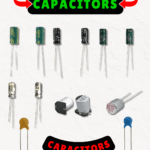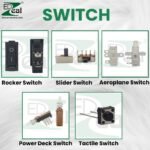Capacitor Testing Made Easy: Methods for OEMs, Technicians & Repair Experts

How to Test a Capacitor: Simple Steps for Technicians & OEMs
Capacitors are crucial in nearly every electronic device—from power supplies and LED drivers to audio systems and industrial boards. When circuits start acting up, a faulty capacitor is often the culprit. So, how do you test a capacitor to be sure it’s working properly?
Whether you’re an OEM, service engineer, or electronics manufacturer, this guide will show you exactly how to check a capacitor with and without a multimeter—quickly and accurately.
📌 Why It’s Important to Test a Capacitor
Capacitors store and release energy. But over time, they may leak, bulge, dry out, or lose their capacitance value. This can cause:
- Power failures
- Flickering LEDs
- Audio distortion
- Heating issues in power supplies
Regular testing helps you identify such faults before they lead to equipment failure.
🛠️ How to Test a Capacitor with a Multimeter
Using a digital multimeter with a capacitance mode is the easiest method.
✅ Steps:
- Discharge the capacitor: Short the leads using a resistor or insulated screwdriver.
- Set the multimeter to capacitance mode (F or μF).
- Connect the probes to the capacitor’s leads (red to positive, black to negative).
- Read the value: Compare it with the printed capacitance (e.g., 100μF, 450V). If it’s more than 20% off, it’s likely defective.
🔄 How to Check a Capacitor Without a Multimeter
No multimeter? No problem. Here’s another way using just a simple analog meter:
- Discharge the capacitor.
- Set your analog meter to resistance (ohms).
- Connect probes: The needle should jump up (charging) and drop back (discharging).
- No needle movement? The capacitor might be open or shorted.
This method doesn’t show exact capacitance but helps you determine if it’s dead or alive.
🔎 How Do You Test a Capacitor in Circuit?
In-circuit testing requires caution and precision. Use an ESR (Equivalent Series Resistance) meter if available—it can measure capacitor health without removing it from the PCB. Alternatively, de solder one leg to isolate it partially for testing.

🧰 Common Signs of a Faulty Capacitor
- Bulging or leaking casing
- High ESR (resistance)
- No charge/discharge action
- Multimeter reads “OL” or zero
If you notice any of these, replace the capacitor.
🛒 Where to Buy Reliable Capacitors
If you’re looking to buy capacitors in bulk for industrial, R&D, or OEM use, we at DDS International – Edzeal supply a wide range of quality capacitors with fast shipping across India.
Explore:
- Electrolytic Capacitors – DVAN, JWCO (KM, LF Series), Edzeal
- DIP Ceramic Capacitors – DVAN, NDF
- SMD Ceramic Capacitors – Edzeal
- Solid Capacitors – JWCO
We’re the Authorised Distributor of JWCO in India, supplying genuine KM, LF series Electrolytic, SMD Electrolytic & Solid Capacitors for OEM and Bulk Buyers. Click here to view all JWCO capacitors.
We also manufacture our own trusted brand – Edzeal Capacitors – known for quality, consistency, and competitive pricing.
🔧 Final Thoughts
Now you know exactly how to test a capacitor—with or without fancy tools. It’s an essential skill for ensuring circuit integrity and preventing bigger faults down the line.
If you’re maintaining power electronics, LED boards, or industrial machines, reliable capacitors are non-negotiable. Don’t compromise on quality—source from certified B2B suppliers.
Visit Now for More Components : https://edzeal.in/



